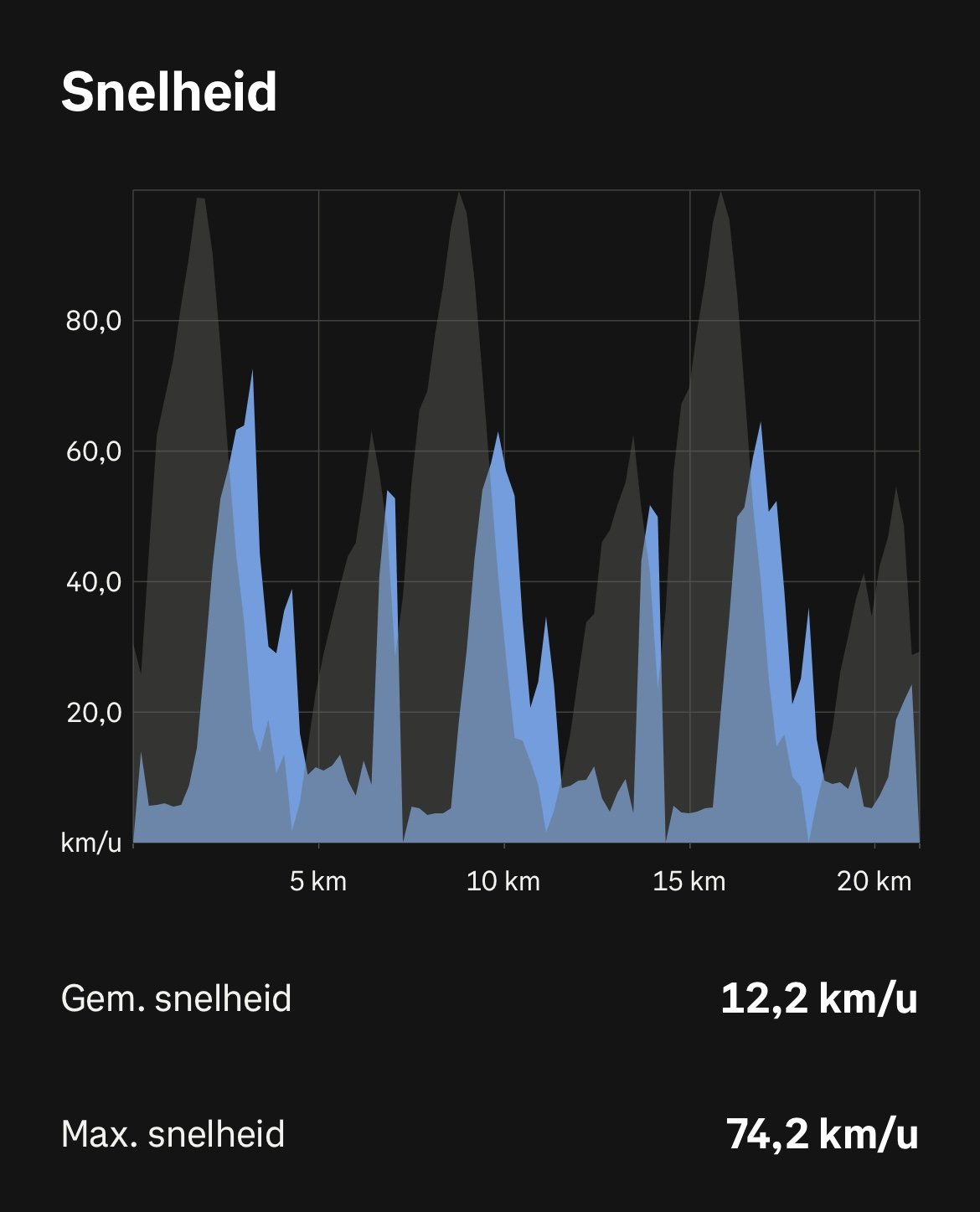#20 - I DID IT
I was planning this one for a couple of weeks, and the closer I got to the event, the worse the weather predictions got. On the day, it became clear that it would be a rainy event. As if the ride itself wouldn’t be hard enough, Mother Nature threw me a curveball. I wasn’t even sure I could make it to the top of “Eau Rouge” in good conditions. Let alone in conditions where my muscles could cramp up from the cold alone.
Near the top of Eau Rouge. I took the visor of for cleaning at this point.
I really wanted to try this one now. I didn’t want to wait until next month. I wanted to know what my body could take. And riding the F1 track of Spa Francorchamps on my trike was a goal in itself of course.
When I found out the start was literally at the bottom of “Eau Rouge”, I doubted my decission not to go for a warm up ride in the rain. That’s virtually a wall you climb. It’s a challenge with a run up, let alone from a standing start. I had decided to go to the left of the track, on the wide run of, to zig zag my way up. Soon, I found that’s the best way to make it to the top. Many riders on diamond frame bikes had to walk to the top, but I got there on my trike.
Just after the top, you find “Kemmel Straight”. On tv it looks like a flat piece of road, while in reality it’s an endless light climb up to “Les Combes”. From that point on, I could really feel the difference between a regular bike and my trike. Where regular bikeriders had to slow down for turns, I could keep peddling. Where others had to take a wider line, I could still hit the apex in the pouring rain. It felt great to pass riders who passed me on the climb, including bikes with electrical support. The
reason for this difference in speed, is my two front wheels. They stay vertical to the road and offer more contact surface then two wheels. I noticed I was riding my brakes slightly through some corners, mostly to help with the steering. The trike has two separate brakes on the front wheels, so hitting one, actually makes the trike turn. This technique helped me to stay at a safe sideway distance to other riders while passing them. All the way through “Bruxelles” and the “Double Left”, I kept going faster and faster. At that second left hand turn, I actually hit 74,2 kph.
74,2 KPH
A little further, at “Blanchimont”, the next climb dropped my speed to a consistent 10 - 15 kph all the way to the top near the start-finish straight and “La Source”. The sharp right-hander leads to the Vally of “Eau Rouge” again, this time to start the climb with a solid run up. I was amazed to find how fast I lost speed once more. As I mentioned before, it’s like hitting a wall on a bike. Maybe with an even smaller gear it would be easier, but this will always be a challenging climb. While I was hoping to reach the top in a straight line this time, again, I had to zig zag to make it to there.
At the end of the event, I completed 3 laps, including a short break just after “Les Combes”. I didn’t really needed the break, but I just wanted to take some time to imagine what it feels like to stand so close to the track, during an F1 race. I took a spot behind the crash barriers, and watched the other riders go by.
I ended the last lap by riding through both the new and old pit lane. It was only then, I noticed how wet I really was. My gloves and coat were soaked. They felt heavy and cold. Somehow, I didn’t feel that on track. Of course
I was wet, but it felt ok. The only issue I had on track, was the rain hitting my eyes on the fast stretches. It got so bad, that I had to cover my eyes with my hand. An issue I didn’t expect wearing a helmet with a visor.
Now let’s hope the next time I go, it will be a nice warm summers day. Maybe then I’ll be able to make it around the track 4 or 5 times.


